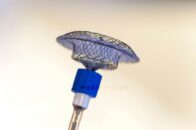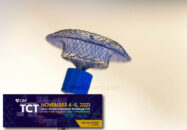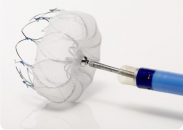While the rate of stroke has decreased since the early days of transcatheter aortic valve replacement (TAVR), it remains non-negligible, reaching up to 1%-3% at 30 days. As TAVR progressively expands to low-risk populations and younger patients, identifying risk factors for patient selection and management in stroke prevention becomes crucial. While researchers have identified predictors…
CAPTIS, a Novel Cerebral Embolic Protection System in TAVR
The incidence of stroke after TAVR ranges between 2 and 5%, depending on the series, which has been associated with higher morbimortality, affecting patient quality of life and their psycho-social environment. Many cerebral embolic protection systems have been developed in response, and even though they have been shown beneficial in many studies, their role in…
Should We Treat Stroke Percutaneously in TAVR?
Since its inception, transcatheter aortic valve replacement (TAVR) has improved greatly. However, there still are five big challenges to be solved: paravalvular leak, conduction disturbances, debilitating stroke, impaired kidney function, and major vascular complications and bleeding. Most cases of stroke are periprocedural and ischemic. So far, they have not been well analyzed in terms of…
Complicated Non-Stenotic Carotid Plaques: A Light in the Diagnosis of Cryptogenic Stroke?
Stroke is one of the leading causes of death and disability. It produces great morbidity by causing marked post-event cognitive impairment. Recurrence of an ischemic event may vary according to the cause of the stroke. Complicated non-stenotic carotid plaque (CCP) type VI (according to the American Heart Association [AHA] classification) has been described as an…
EuroPCR 2022 | Jenavalve Trilogy System: Valve for Severe Aortic Regurgitation
Though the different percutaneous valves have been designed and authorized for aortic stenosis with tricuspid valve, they have often been used to treat aortic regurgitation as an off-label indication. The Jenavalve Trilogy valve has recently received the CE Mark for aortic regurgitation and aortic stenosis. This study included 45 patients with severe AR. Primary end…
Symptomatic Carotid Arteries: Early or Late Emergency Revascularization?
Carotid endarterectomy continues to be the safest technique for emergency revascularization. However, 48 hours after index event, different strategy outcomes will become comparable. Multiple advances in device development have brought promising results for carotid revascularization patients with symptomatic stenosis. Regardless these developments, optimal revascularization timing after index event remains unclear. This study included patients with…
AMULET IDE: New Research Compares WatchMan and Amulet Devices Providing New Evidence
Recently, at the TCT Congress results from the SWISS-APERO study comparing Watchman and Amulet devices were presented. Now, a new study, Amulet IDE—published in Circulation—, compared both devices on a large number of patients. Amulet IDE was designed to evaluate the safety and efficacy of dual-seal mechanism device Amulet compared with the Watchman (a widely…
TCT 2021 | SWISS-APERO: Difference in Leaks between the Amulet and the Watchman
The Amplatzer Amulet (Abbott) achieves better left atrial appendage closure than the Watchman 2.5 and Watchman FLX (Boston Scientific) in patients with atrial fibrillation at risk of stroke. This imaging finding has not yet been associated with clinical adverse events. This study called SWISS-APERO was presented at TCT 2021 and simultaneously published in Circulation. It…
One Year of Successful Carotid Artery Stenting with the CGuard Device
This registry of daily clinical practice suggests that this specifically designed double-mesh carotid stent is safe and associated with a minimal and acceptable occurrence of neurological events up to 12 months of follow-up. This double-mesh stent has already been tested, and its short- and long-term efficacy has been proven. However, more recent data have challenged the…
AMULET vs. WATCHMAN: Appendage Closure Devices, Head to Head
This research was designed to compare the double closure system of the AMULET device with the WATCHMAN (an evidence-backed proven device). In that context, to prevent stroke in patients with non-valvular atrial fibrillation, the Amplatzer AMULET device was non-inferior in both safety and efficacy compared with the WATCHMAN. Atrial appendage occlusion in itself improved with…







